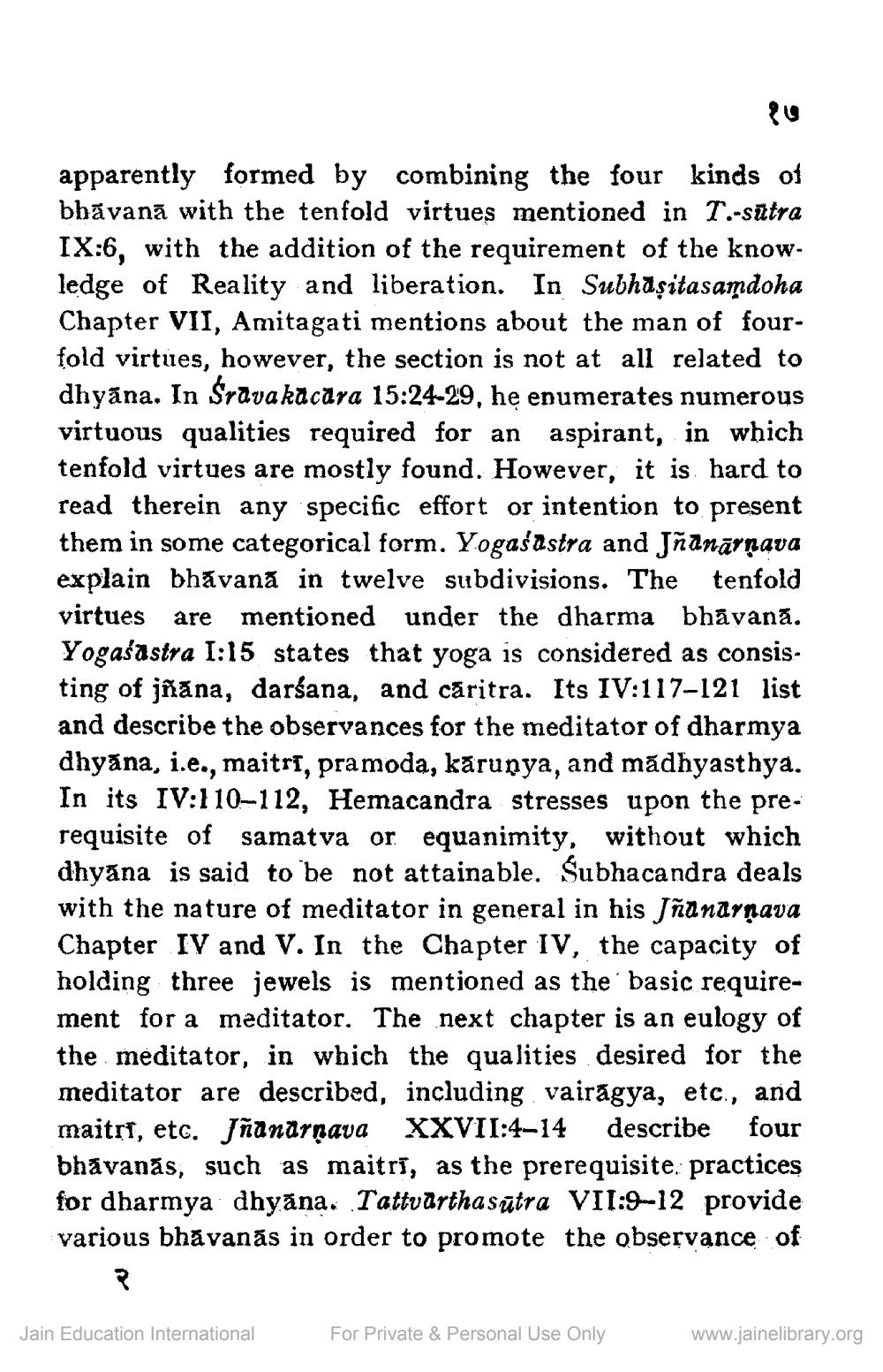________________
apparently formed by combining the four kinds of bhāvanā with the tenfold virtues mentioned in T.-sūtra IX:6, with the addition of the requirement of the knowledge of Reality and liberation. In Subhasitasamdoha Chapter VII, Amitagati mentions about the man of fourfold virtues, however, the section is not at all related to dhyāna. In Sravakacara 15:24-29, he enumerates numerous virtuous qualities required for an aspirant, in which tenfold virtues are mostly found. However, it is hard to read therein any specific effort or intention to present them in some categorical form. Yogaśastra and Jñanārnava explain bhāvanā in twelve subdivisions. The tenfold virtues are mentioned under the dharma bhāvanā. Yogaśastra I:15 states that yoga is considered as consis. ting of jñāna, darśana, and caritra. Its IV:117-121 list and describe the observances for the meditator of dharmya dhyāna, i.e., maitri, pramoda, karunya, and madhyasthya. In its IV:110-112, Hemacandra stresses upon the prerequisite of samatva or equanimity, without which dhyāna is said to be not attainable. Subhacandra deals with the nature of meditator in general in his Jñanarnava Chapter IV and V. In the Chapter IV, the capacity of holding three jewels is mentioned as the basic requirement for a meditator. The next chapter is an eulogy of the meditator, in which the qualities desired for the meditator are described, including vairāgya, etc., and maitri, etc. Jñanarnava XXVII:4-14 describe four bhavanas, such as maitri, as the prerequisite: practices for dharmya dhyāna. Tattuarthasūtra VII:9-12 provide various bhavanas in order to promote the observance of
Jain Education International
For Private & Personal Use Only
www.jainelibrary.org




